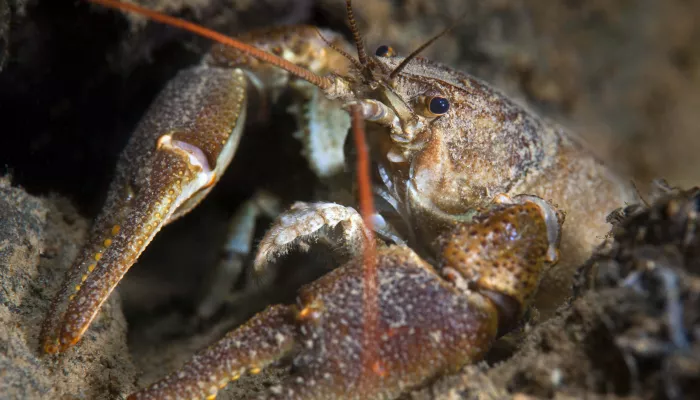| Statistics | |
|---|---|
| Length: | 6cm - 12cm |
| Weight: | up to 90g |
| Avg. Lifespan: | 8-12 years |
The White-clawed crayfish is a freshwater, bronze-coloured crustacean with pale undersides to its claws - hence the name. It is under threat from an invasive and introduced species of crayfish.
About
As the UK's only native freshwater crayfish, the White-clawed crayfish is in decline due to the introduction of the non-native North American signal crayfish. This invasive species has brought disease to which our indigenous crayfish has no natural resistance. An omnivorous crustacean, the White-clawed crayfish eats invertebrates, carrion, water plants and dead organic matter. It inhabits small freshwater streams of a depth less than 1 metre, hiding underneath stones and rocks and in small crevices where they forage for food.
How to identify
The White-clawed crayfish is small and bronze-coloured, with pale cream or rose undersides on its claws.
Did you know?
The White-clawed Crayfish needs mineral-rich water to fortify its exoskeleton, the same way we need calcium to enrich our bones.
How people can help
The Wildlife Trusts work with planners, water companies, landowners, statutory bodies and anglers to help make our waterways and waterbodies as good for wildlife as they are for people. By working together, we can create Living Landscapes: networks of habitats stretching across town and country that allow wildlife to move about freely and people to enjoy the benefits of nature. Support this greener vision for the future by joining your local Wildlife Trust.

